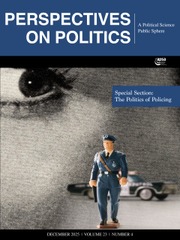T.V. Paul’s review captures many of the central arguments I aimed to convey, particularly the intricate relationship between populism, intellectual elites, and technology that has fuelled the rise of the BJP and the broader Hindutva movement. One of the most gratifying aspects of the review is its recognition of the interplay between ideology and technocratic expertise in shaping modern populist movements. The BJP’s success, as I argue, cannot be understood solely in terms of its ideological messaging. It is the party’s ability to effectively harness intellectual and technocratic resources (through think tanks, IT cells, and consultancies) that has allowed it to consolidate its electoral power. This is precisely the nuance I wanted to bring to light, moving beyond the simplistic dichotomy of populism as purely an ideological project. The BJP’s reliance on experts—whether technocrats in IT cells or intellectuals crafting policy at think tanks—mirrors a broader global trend of populist movements that seek legitimacy through their technocratic competence, even as they simultaneously undermine pluralist democratic norms.
However, while I appreciate the review’s overview of the BJP’s use of propaganda and social media, I would like to emphasize that the significance of technology in populist movements extends beyond mere propaganda. The BJP’s ability to embed itself within technocratic institutions and reshape India’s public discourse has been transformative. This is not just a matter of using technology to spread a message but of creating a “new expertise” that reshapes how governance and policy are perceived by the public. By positioning themselves as both traditionalists and modernizers, BJP elites have successfully claimed the mantle of expertise in a way that appeals to both India’s past and future. Unlike movements that are often characterized by their anti-intellectualism, the BJP has been able to integrate technocratic and intellectual elites into its project, which distinguishes it from, say, the populism of Trump’s America or Orbán’s Hungary. This is also a significant departure from Congress’s attempts, which have often been less ideologically consistent and slower to innovate. The Congress-led governments in the past indeed fostered economic growth and socio-economic reforms, as the review mentions. However, I believe that BJP’s mastery of integrating technology with a revivalist vision of a “glorious” India—a concept that resonates deeply with the electorate—has been pivotal. BJP’s use of digital tools does not merely serve as a means of communication; it has become a vehicle for an entire cultural–political project aimed at reshaping the electorate’s understanding of India’s identity.
The review’s critique regarding my analysis of Modi’s global ambitions is well-received. I acknowledge that I could have provided a more detailed exploration of how Modi’s global outreach fits into the BJP’s domestic narrative. As Paul suggests, these global ambitions are deeply intertwined with the party’s nationalistic agenda. Modi’s vision of a “viksit Bharat” (developed India) by 2047 is not just an economic or geopolitical ambition; it is a civilizational project that seeks to restore India’s place in the world after centuries of colonial subjugation. His outreach to the Indian diaspora, especially in the West, is a key part of this effort. The ways in which global ambitions are sold to the domestic audience are certainly crucial, but I see this more as an extension of the core narrative of Hindutva, where India’s historical subjugation and future greatness are intertwined. Modi’s rhetoric about a rising India plays into the same themes of grievance and aspiration that underpin Hindutva domestically. Modi’s foreign trips are often framed as symbolic victories that validate the BJP’s vision of India as a rising global power. This, in turn, strengthens his domestic standing, as his global image of statesmanship plays well with both the middle class and the expatriate community, who see in Modi a leader capable of restoring India’s past glory.
Lastly, the review’s point about the limitations of populism, even when it is coupled with technocratic expertise, gestures to the BJP’s failure to secure a majority in the 2024 elections. While the BJP has been highly successful in controlling the political narrative and using technology to its advantage, it faces growing dissatisfaction over issues like unemployment, economic inequality, and the perception of declining democratic freedoms. Populist movements often face internal contradictions, and the BJP is no exception. As my book suggests, while the party has mastered the art of electoral politics through a combination of populism and technocracy, it remains vulnerable to the socioeconomic realities that affect ordinary citizens.
I am grateful for this thoughtful review and its engagement with the key themes of my book. The New Experts aims to provide a deeper understanding of how populist movements, particularly in India, are not just ideologically driven but also rely on a complex ecosystem of technocrats, intellectuals, and experts. The BJP’s ability to integrate these elements has been central to its success, and I hope my book contributes to ongoing discussions about the evolving nature of populism in India and beyond.


